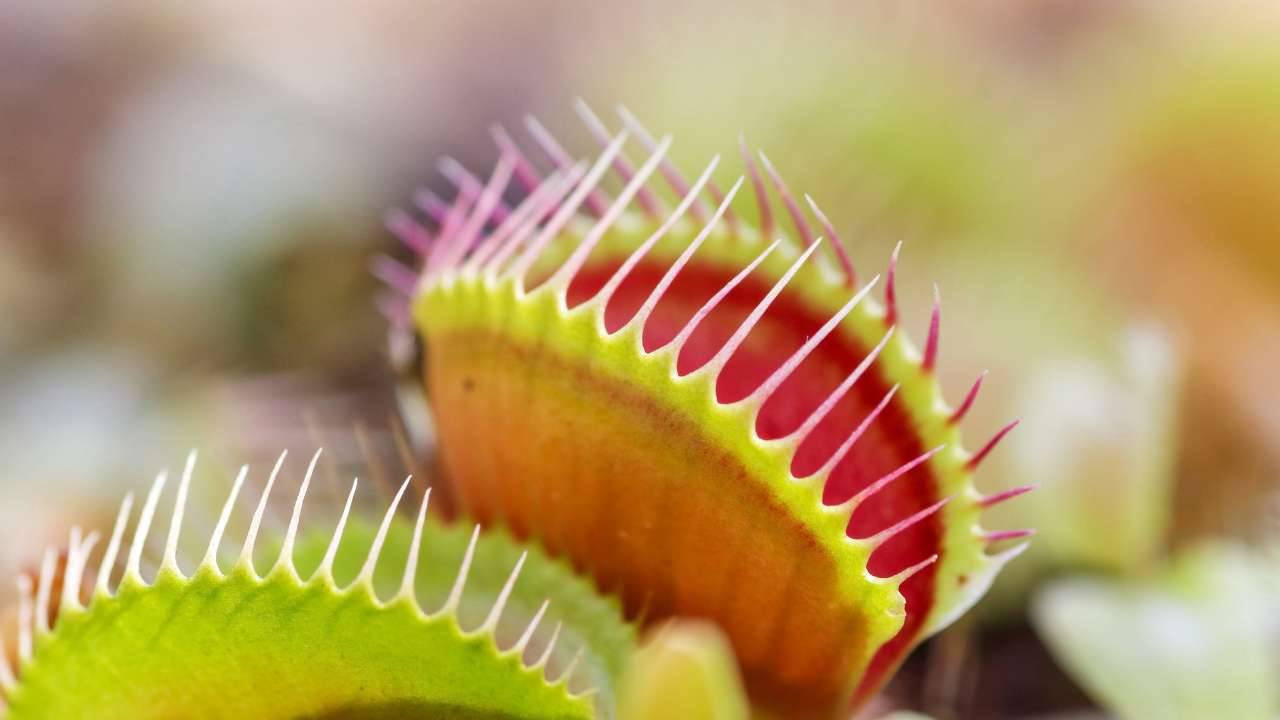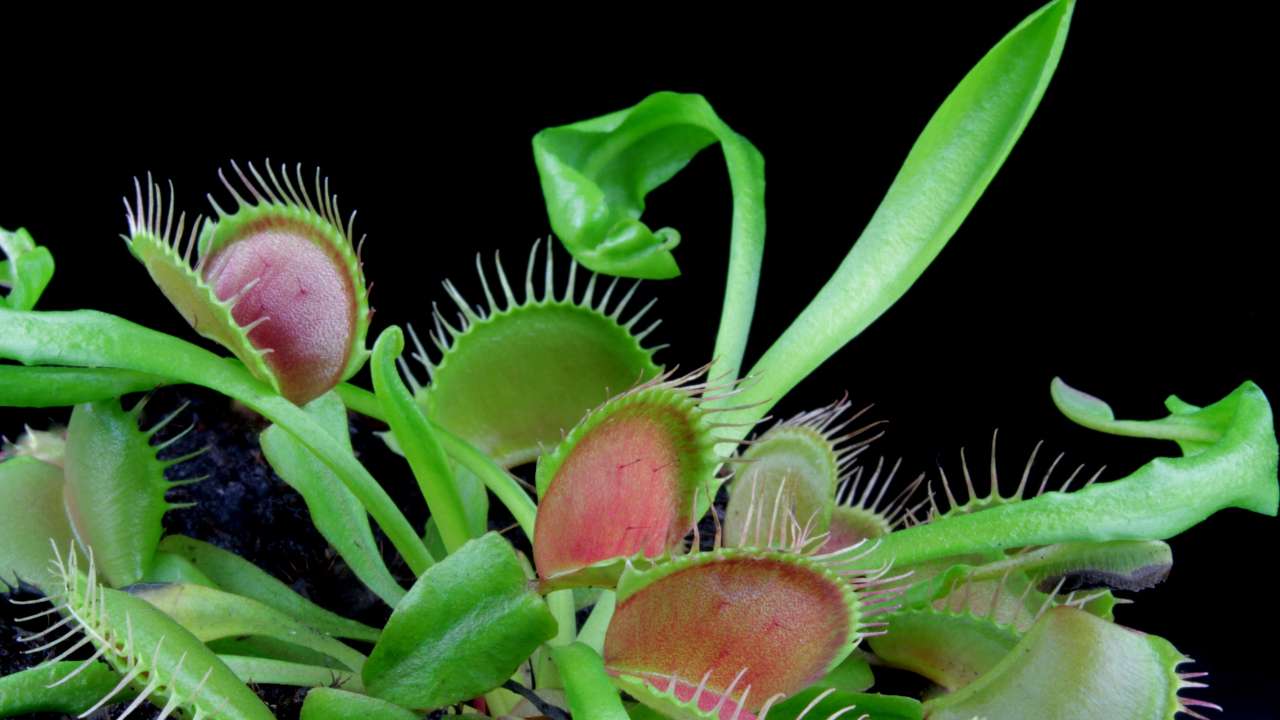
There is no other plant like the large Venus fly trap. It captures insects with its trap-like leaves. Found only in the United States, it lives in poor soil. It gets nutrients from its prey. This plant is famous worldwide. It appears in movies and books. It is a symbol of curiosity and the wonder of nature. Caring for it is rewarding. It shows how amazing plants can be.
Origin and Habitat
| Characteristic | Description |
|---|---|
| Family | Droseraceae |
| Origin | Subtropical wetlands of North and South Carolina |
| Common Names | Venus Fly Trap |
| Growth Habit | Small perennial with 4-7 hinged leaves |
| Flowering | White flowers in early summer |
| Light | Full sun to partial shade |
| Water | Moist with distilled or rainwater |
| Soil | Nutrient-poor, acidic (peat moss, sand, perlite) |
| Temperature | 70-95°F; requires winter dormancy at 35-50°F |
| Humidity | High, 60-80% |
| Toxicity | Non-toxic |
| Propagation | Seeds, division, leaf cuttings |
| Pests | Fungal infections, aphids |
| Care Level | Medium |
Natural Home
The large Venus flytrap is endemic to the United States and is in subtropical wetlands. Both North and South Carolina are home to these. Soil fertility is low. This is why the plant eats insects.
Care Influences
Its home impacts how we care for it. It needs similar conditions to thrive. This includes wet, acidic soil and lots of sunlight. Knowing its natural habitat helps gardeners mimic these conditions. This ensures the plant's health and growth.
Ideal Growing Conditions

Light Needs
Light is very important for Venus fly trap flowers. They need twelve hours of sunshine every day to flourish. A sunny window or a grow light is ideal for houseplants.
Temperature and Common Mistakes
Blooming Venus fly traps thrive in warm climates, specifically 70–95 degrees Fahrenheit. In winter, cooler temperatures are fine. A common mistake is keeping the plant too warm during its rest period in winter. This can prevent it from flowering. Another mistake is not giving it enough light, which weakens the plant.
Soil and Water Requirements

Soil Type
Huge Venus Fly traps need special soil. The mix should have peat moss and perlite. This keeps the soil light and acidic. The pH should be low, about 5.
Watering Needs
Water your large Venus fly traps with either rainwater or distilled water. Due to minerals and chlorine, tap water can be excessively harsh. Soak the soil lightly with water, but don't let it become drenched. In the growing season, water them more. In winter, less water is okay. Always use a tray under the pot. This helps keep moisture around the roots.
Dormancy Period

Dormancy Cycle
Venus Flytrap with flowers has a rest period. It happens in winter and lasts about three to five months. This cycle is vital for their health and flowering.
Managing Dormancy
While the plant is dormant, it needs a cool environment, between 35 to 50 degrees Fahrenheit. Cut back on watering, but don't allow it to get thirsty. Place it in a spot with less light. This mimics their natural winter conditions. It helps them rest and prepare for spring growth.
Feeding and Maintenance

Feeding
Feed large Venus Flytraps live or dead bugs like flies or spiders. Only feed one trap at a time. Feed them once a month during the growing season. Do not overfeed.
Maintenance and Pests
Keep an eye out for mold and fungal infections. Remove dead traps to keep the plant healthy. Use a safe fungicide if needed. Watch for aphids and spider mites. Rinse them off with water or use insecticidal soap.
Propagation
Start a fresh Venus flytrap garden by sowing seeds or cuttings. Soak the seeds in water and cover them with warm soil. The sprouting time for seeds is two to four weeks. For division, separate mature plants during repotting. This works best in spring. Carefully divide the root ball to create new plants. Each section should have a few traps. This helps the plant recover faster.
FAQs
On what schedule should I give my Venus flytrap food?
During the active growing season, you should feed your Venus flytrap once a month. Each trap of the plant should only eat one insect at a time. This is enough to keep it healthy. When the plant is asleep in the winter, don't feed it.
Is it possible to keep Venus flytraps inside?
It is possible to cultivate Venus flytraps indoors, yes. Sunlight is crucial to their survival. Position them close to a window that receives full sunshine throughout the day. To make up for the lack of light in the winter, you can use a grow lamp.
If my Venus flytrap's traps won't close, what am I to do?
Several things might be at play if the traps remain open. Perhaps the trap is too old and dying off, or perhaps it isn't receiving enough light. Make sure your plant gets plenty of sunlight and check if the soil is appropriate. Sometimes, feeding a bit of a recommended nutrient supplement can help.
Conclusion
This guide covers looking after Venus Flytraps. It includes their natural habitat, ideal light, temperature, soil, and water needs. We also discussed how to feed them and handle dormancy and pests. The pet-friendly large Venus flytrap is a rewarding plant to grow. Inspiring and revealing of nature's marvels, they are captivating. Try growing one yourself and enjoy the experience.



